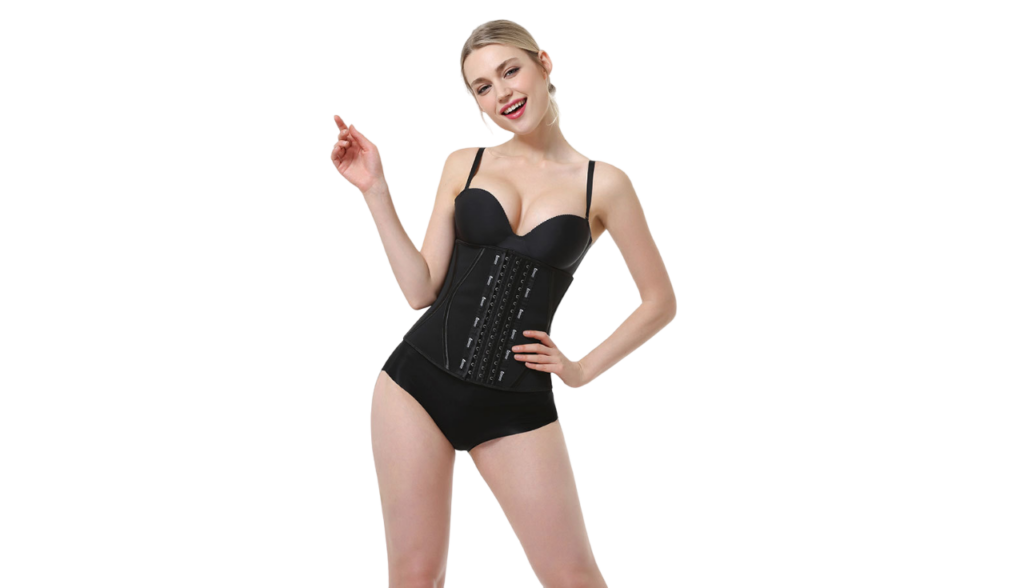I. Introduction
Definition of waist trainers and their popularity
Waist trainers are garments designed to slim and shape the waistline. They are worn around the midsection and apply pressure to the waist to create a slimming effect. The use of waist trainers has become increasingly popular in recent years, particularly due to the trend of achieving an hourglass figure.
Waist trainers come in various styles, including corsets, cinchers, and belts. Some are made of latex, while others are made of more breathable materials such as cotton or spandex. They are available in different sizes, shapes, and colors to fit the preferences of different individuals.
While waist trainers have become a popular way to achieve a slimmer waistline, it is important to note that they should be used in moderation and in conjunction with a healthy lifestyle. Excessive use of waist trainers can cause discomfort, breathing difficulties, and other health issues. It is essential to use waist trainers safely and responsibly to reap their benefits without risking harm to one’s health.
Purpose of the article
The purpose of this article is to provide a comprehensive guide to waist trainers, including their definition, popularity, different types, and how to select the best one for your needs. The article will also cover the potential benefits and risks associated with wearing waist trainers, as well as tips for proper usage and maintenance. Whether you are interested in using a waist trainer for weight loss or just want to learn more about this popular fitness trend, this article has got you covered.
II. Benefits and Appropriate Usage of Waist Trainers
Explanation of how waist trainers work
Waist trainers are designed to provide compression to the midsection of the body, with the intention of creating a slimmer and more defined waistline. The compression works by compressing the internal organs, which can create a more compact appearance. This is achieved through the use of materials like latex, nylon, or spandex, which are stretchy and form-fitting.
When you wear a waist trainer, it encourages your core muscles to work harder and supports your lower back, which can help improve your posture. This can lead to improved confidence, especially if you struggle with your body image. Some people also claim that wearing a waist trainer during workouts can increase sweating in the abdominal area, which can help with weight loss. However, it’s important to note that any weight loss from sweating is temporary and not a long-term solution.
It’s important to remember that waist trainers should not be used as a replacement for a healthy diet and exercise routine. While they can help support your midsection during workouts and improve your posture, they should not be relied upon as the sole method of achieving a slimmer waistline. Additionally, prolonged use of waist trainers can have negative effects on your health, such as decreased lung capacity and digestive issues. It’s recommended to consult with a doctor before using a waist trainer and to use them in moderation.
Benefits of wearing a waist trainer during exercise or everyday activities
Waist trainers have gained immense popularity in recent years, and for good reason. These garments, which are typically made from latex or other materials and worn tightly around the midsection, have a number of benefits for those who wear them during exercise or everyday activities.
One of the primary benefits of wearing a waist trainer is that it can help to improve posture. The tight compression around the waist encourages wearers to stand up straight, which can alleviate pressure on the lower back and help to reduce pain and discomfort in this area.
In addition to improving posture, waist trainers can also help to provide support and stability during exercise. The compression around the midsection can help to reduce jiggling and movement during high-impact activities like running or jumping, which can be particularly beneficial for women with larger busts.
Waist trainers can also help to enhance weight loss efforts. The compression around the waist can create a thermal effect, increasing sweat production and stimulating the body to burn more calories. When worn during exercise, waist trainers can help to target the midsection, where many people tend to store excess fat.
Overall, wearing a waist trainer during exercise or everyday activities can provide a range of benefits for those looking to improve their posture, support their body during physical activity, and enhance their weight loss efforts. However, it is important to use waist trainers safely and in conjunction with a healthy diet and exercise routine.
Appropriate usage and precautions
While waist trainers can be effective in achieving a smaller waistline, it’s important to use them properly to avoid any potential harm to your body. Here are some tips for appropriate usage and precautions:
- Start Slowly: If you’re new to waist trainers, start by wearing them for short periods of time and gradually increase the duration as you become more comfortable. This will allow your body to adjust to the added pressure and prevent any discomfort.
- Choose the Right Size: It’s crucial to choose a waist trainer that fits your body properly. Wearing a waist trainer that is too tight can cause breathing difficulties, digestive issues, and even damage your internal organs.
- Don’t Wear for Too Long: Avoid wearing your waist trainer for extended periods of time, especially during exercise. Limit use to 6-8 hours per day and take breaks in between.
- Listen to Your Body: If you experience any discomfort or pain while wearing a waist trainer, remove it immediately. Don’t push through the pain, as this could cause serious damage to your body.
- Stay Hydrated: It’s important to stay hydrated while wearing a waist trainer, as they can cause excess sweating and dehydration.
By following these appropriate usage and precautions, you can safely enjoy the benefits of waist trainers without risking your health.
III. Types of Waist Trainers
Waist trainers come in various shapes, sizes, and materials. Below are some of the most popular types of waist trainers:
Classic Waist Trainers:
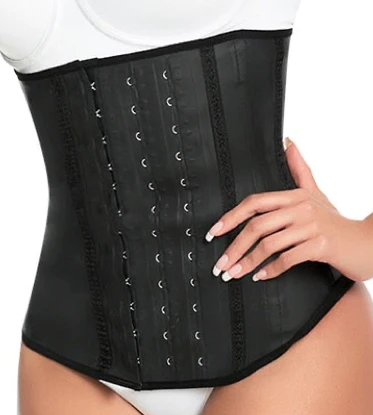
These waist trainers are the most common type and are designed to cinch the waistline and provide support to the back and abdomen. They are made of materials such as latex, spandex, and cotton, and come in a variety of styles, including hook-and-eye closure, zipper closure, and lace-up closure. Classic waist trainers are suitable for everyday wear and can be worn during exercise.
Corset Waist Trainers:
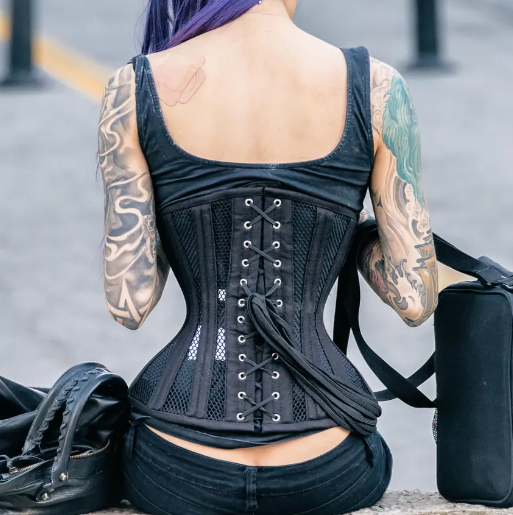
Corset waist trainers are similar to classic waist trainers but are designed to be more restrictive and offer more compression. They have steel boning and lace-up closures, which allow for a more customizable fit. Corset waist trainers are best for special occasions and should not be worn for extended periods or during intense exercise.
Workout Waist Trainers:
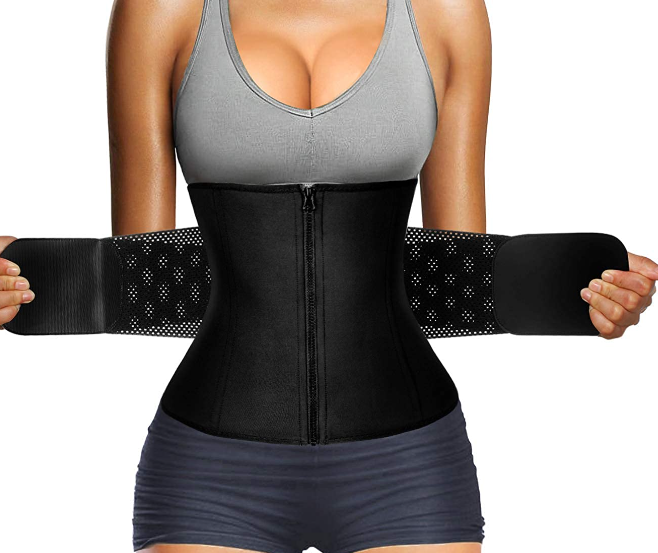
Workout waist trainers are designed to be worn during exercise to increase sweat production in the midsection and enhance calorie burn. They are usually made of neoprene and have a zippered or velcro closure. Workout waist trainers should only be worn during low to moderate intensity exercises such as walking, yoga, or pilates.
Vest Waist Trainers:
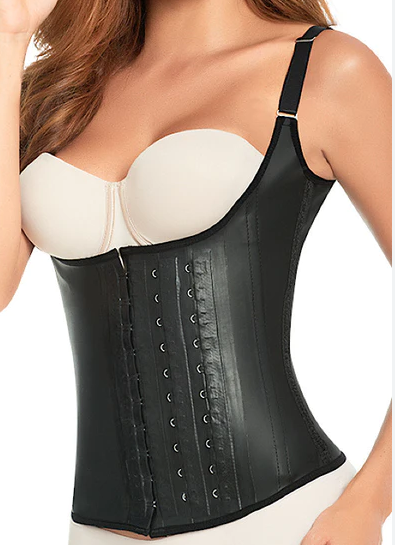
Vest waist trainers cover the entire torso and provide support to the back and breasts in addition to the waistline. They are usually made of neoprene and have adjustable straps for a customizable fit. Vest waist trainers are suitable for everyday wear and can be worn during exercise.
It is important to choose the right type of waist trainer for your body and purpose, as wearing the wrong type of waist trainer can cause discomfort, difficulty breathing, and even internal organ damage. In the next section, we will discuss how to select the right waist trainer for your needs.
IV. Choosing the Right Waist Trainer
When it comes to selecting a waist trainer, there are several factors to consider to ensure you choose the right one for you. Here are some tips to help you make the right choice:
- Size: It is crucial to choose the right size for your waist trainer. A waist trainer that is too small can cause discomfort, while one that is too large will not provide the desired level of support. Always measure your waist before purchasing a waist trainer to ensure a perfect fit.
- Material: Look for waist trainers made from breathable and comfortable fabrics such as cotton or spandex. Avoid synthetic materials that can cause skin irritation or allergic reactions.
- Boning: The boning in the waist trainer is what provides the support and helps maintain the hourglass shape. Look for waist trainers with flexible steel boning, as it is more durable and effective than plastic.
- Style: There are several styles of waist trainers to choose from, including classic, workout, and vest. Choose a style that suits your needs and desired level of compression.
- Brand: Choose a reputable brand that has been tested and proven to be effective. Do your research and read reviews to ensure you are making an informed decision.
By considering these factors, you can choose the right waist trainer for your needs and achieve the desired results safely and comfortably.
V. Maintaining and Caring for Waist Trainers
Once you’ve invested in a waist trainer, it’s important to take care of it to ensure it lasts as long as possible. Here are some tips on how to maintain and care for your waist trainer:
- Follow the manufacturer’s care instructions: Different waist trainers may require different care methods. Always read and follow the care instructions provided by the manufacturer.
- Hand wash or machine wash on a delicate cycle: Most waist trainers are made of delicate materials, such as latex or neoprene, and should be washed gently. Hand washing is the preferred method, but if you must use a washing machine, be sure to select a delicate cycle and use a gentle detergent.
- Air dry: Do not put your waist trainer in the dryer. Instead, hang it to air dry in a well-ventilated area.
- Avoid exposure to heat: Waist trainers should not be exposed to high heat, such as direct sunlight, radiators, or hair dryers. This can damage the material and cause it to lose its shape.
- Store properly: When not in use, store your waist trainer in a cool, dry place away from direct sunlight. Do not fold or crease the garment, as this can damage the material and affect its effectiveness.
By following these tips, you can help to ensure that your waist trainer remains in good condition and continues to provide the support and shaping you desire.
VI. Conclusion
In conclusion, waist trainers can be a helpful tool for those looking to enhance their figure or support their workouts. When used appropriately and in combination with a healthy diet and regular exercise, waist trainers can assist in achieving a more defined waistline and better posture. However, it is important to choose the right type of waist trainer, wear it for appropriate durations, and follow safety precautions to avoid any potential negative effects on your health. By following the tips provided in this article, you can make an informed decision when selecting and using a waist trainer and reap its potential benefits. Remember, consistency and patience are key in achieving any fitness goal.

